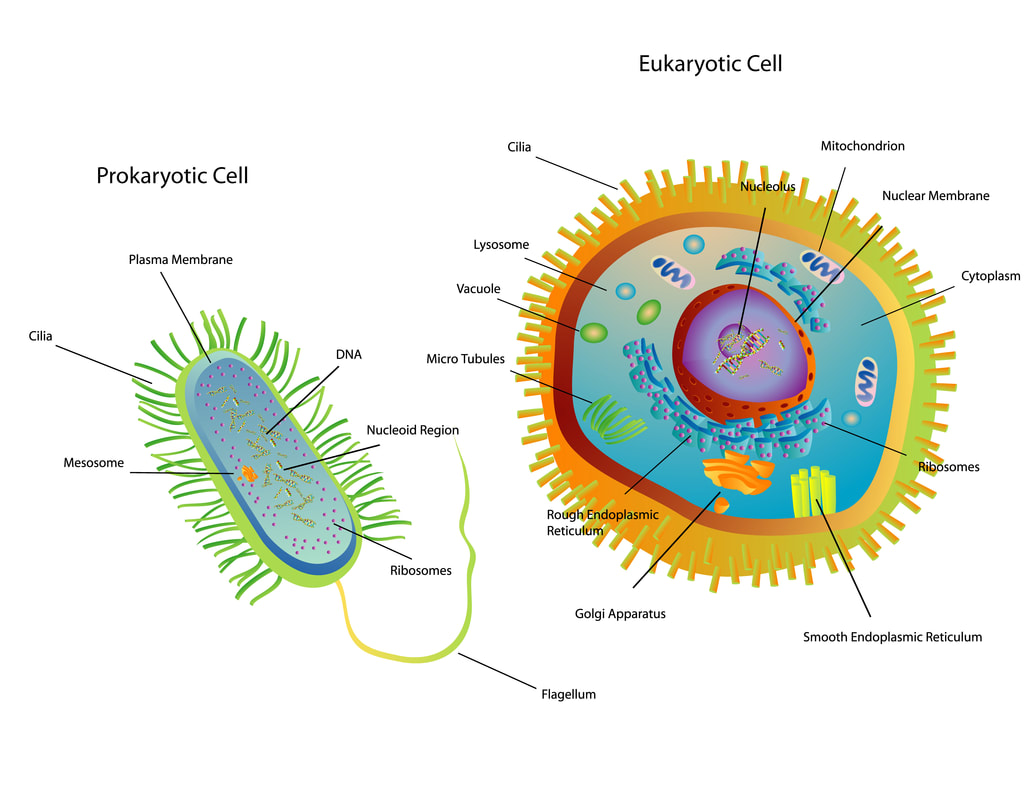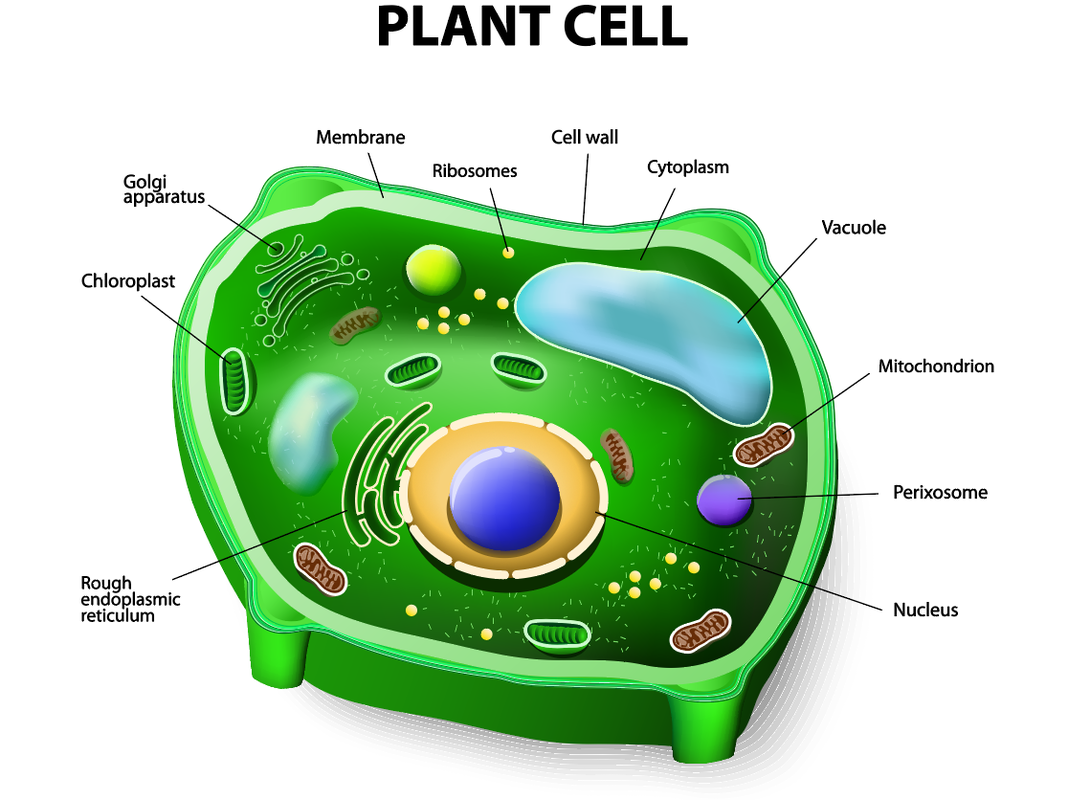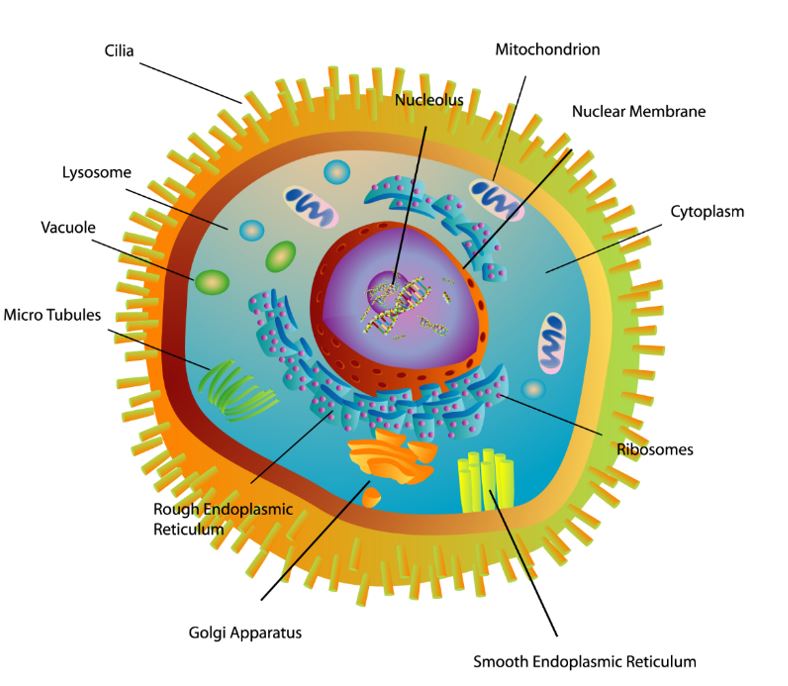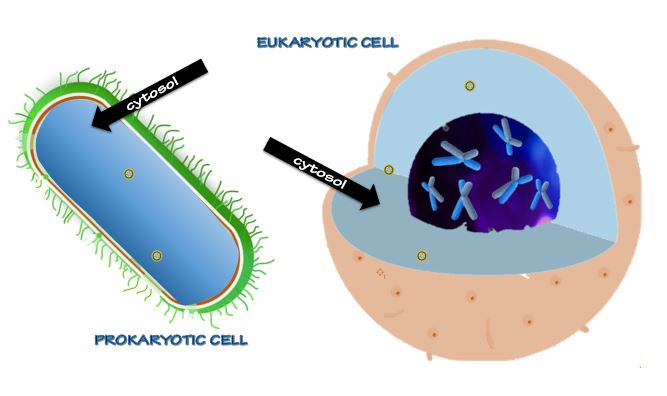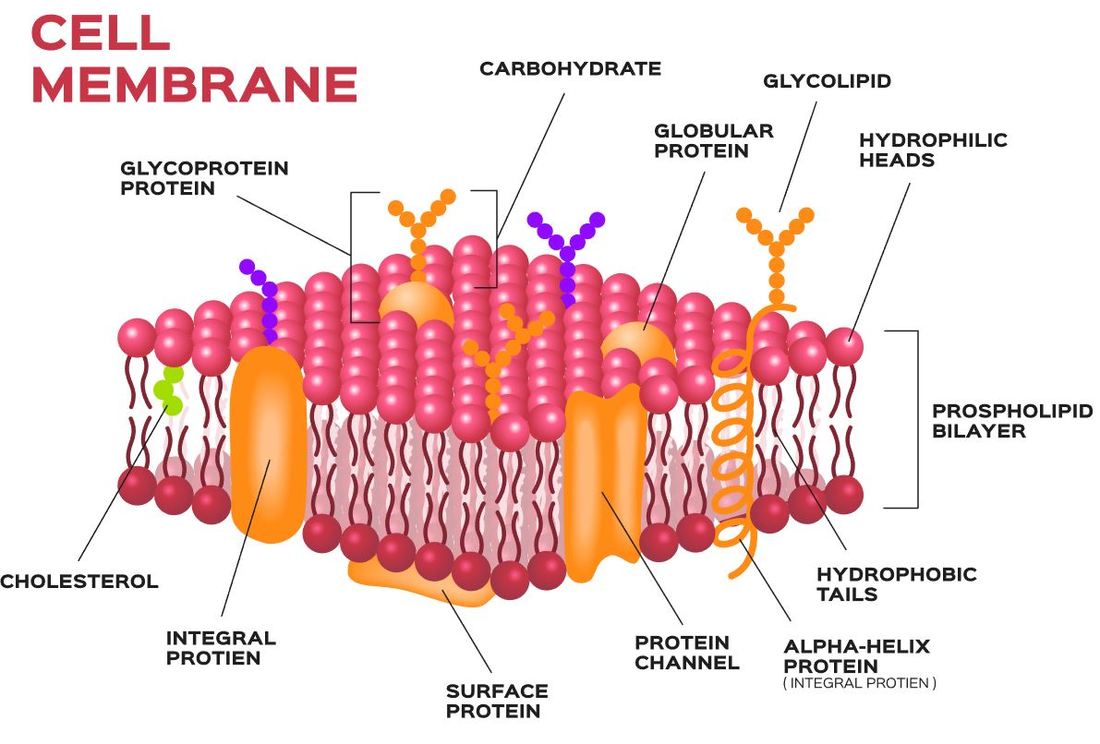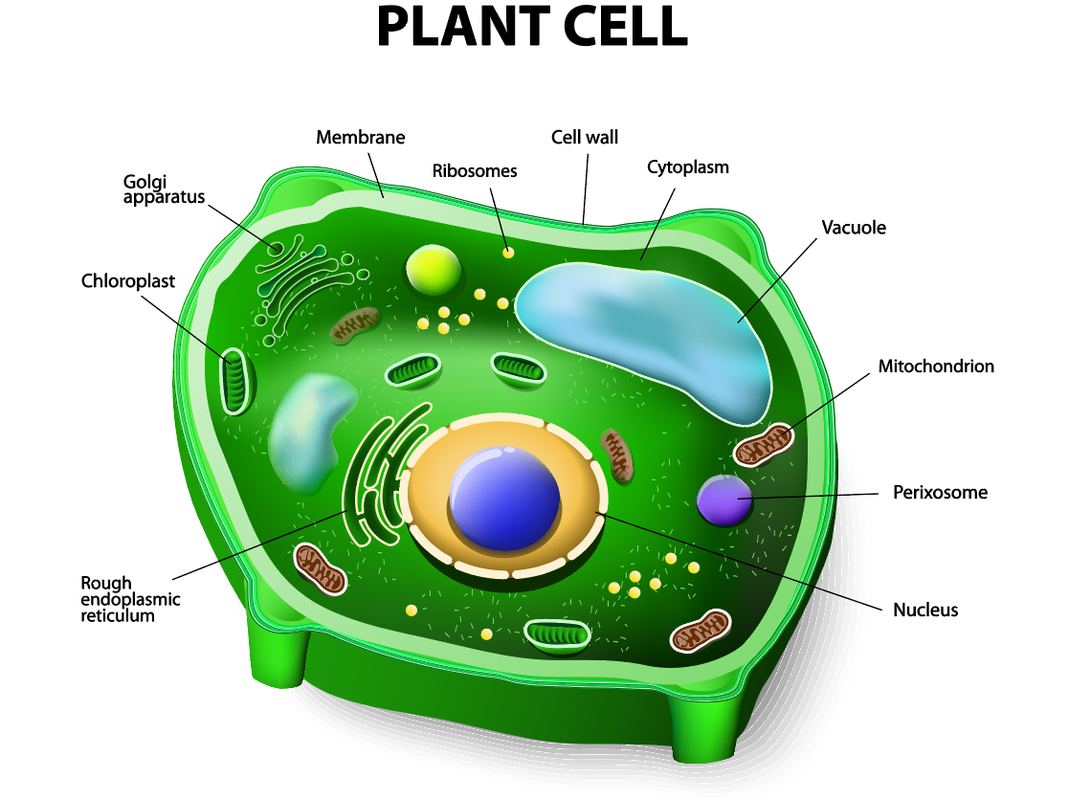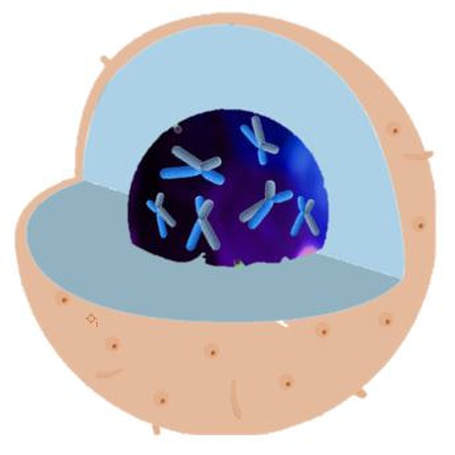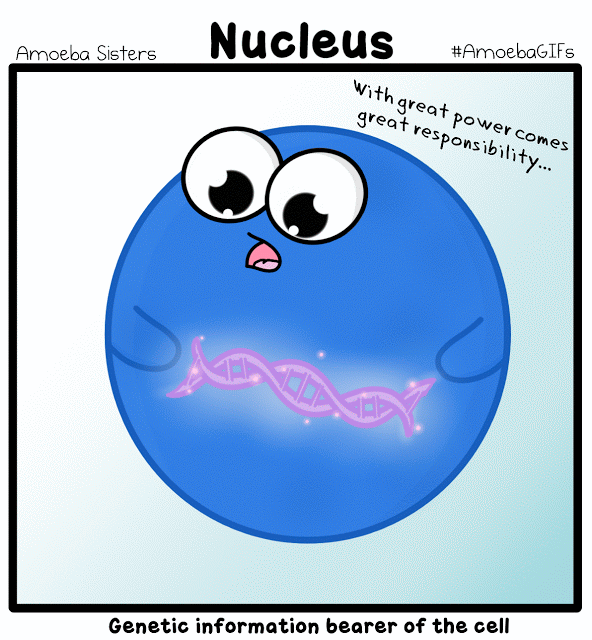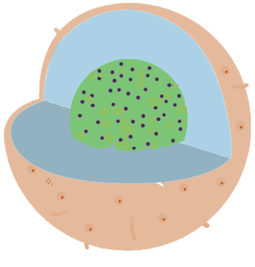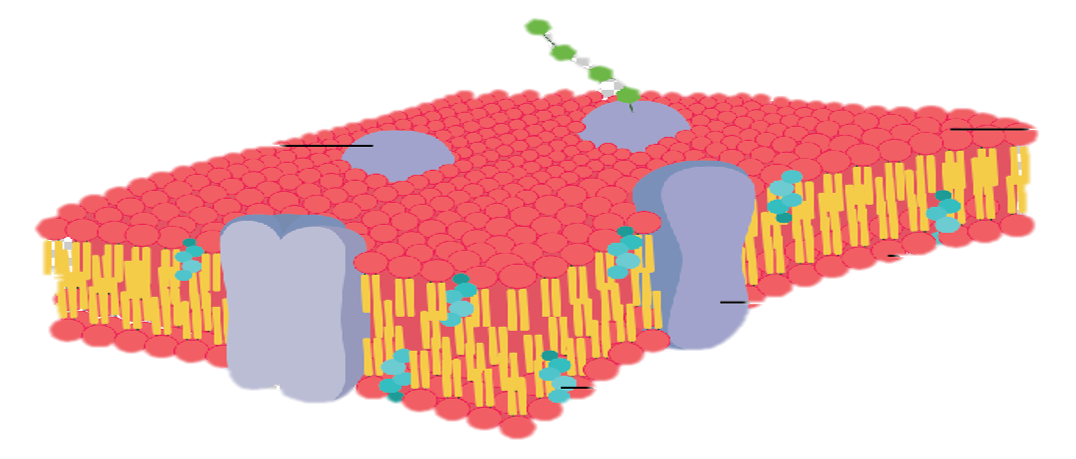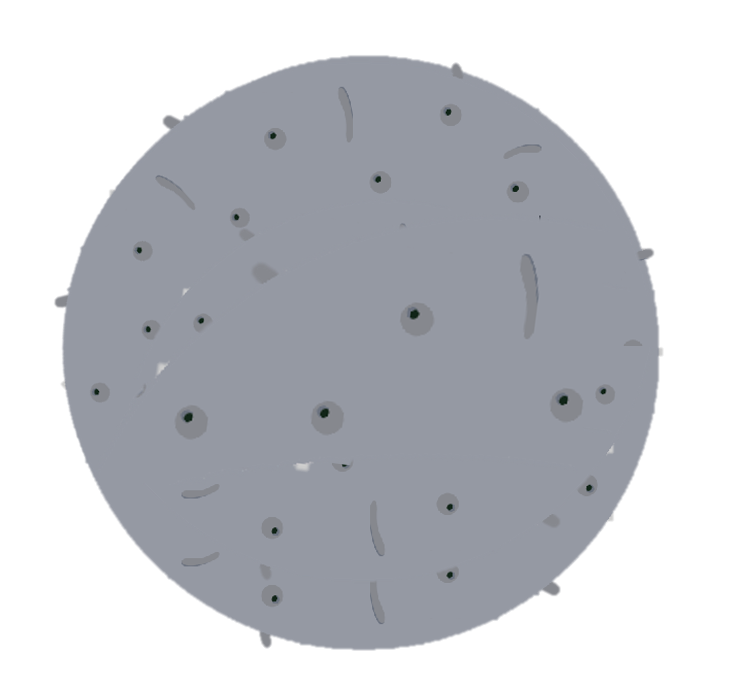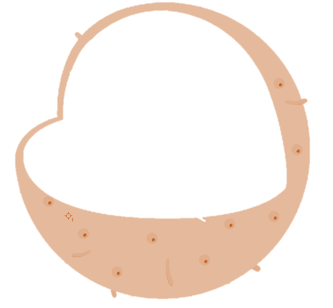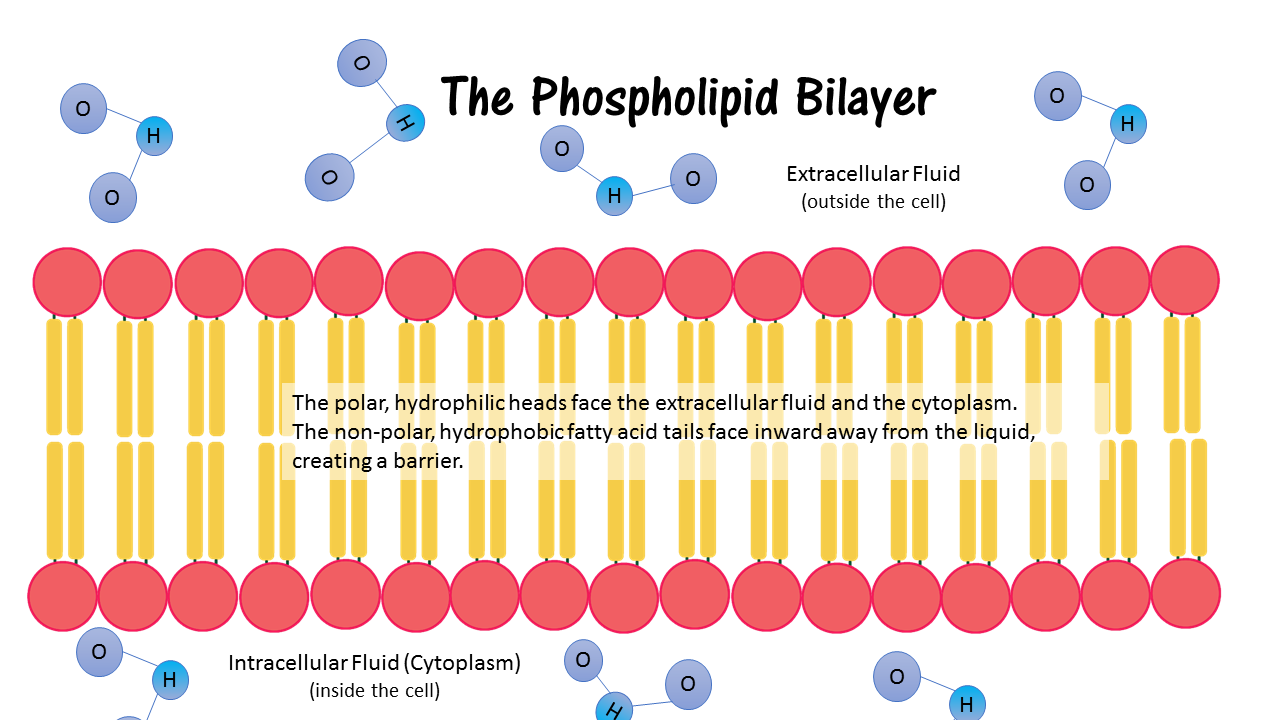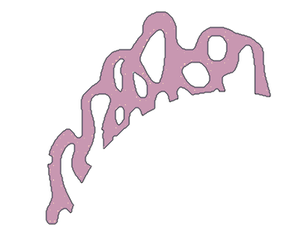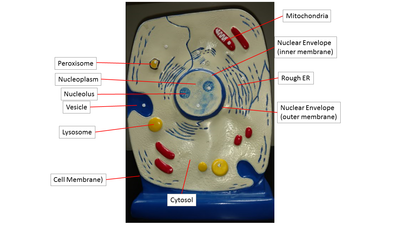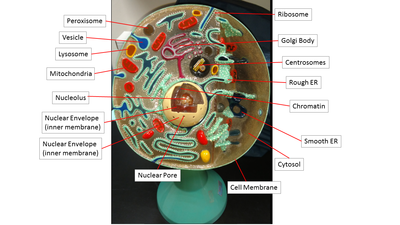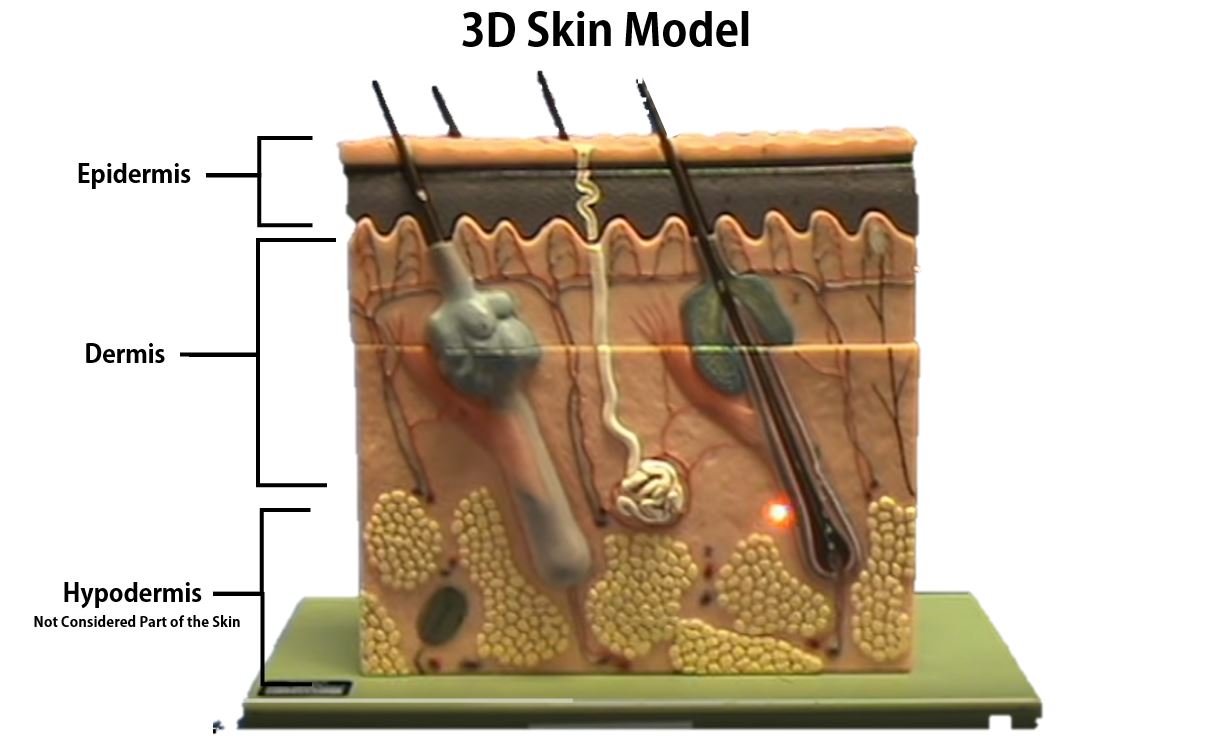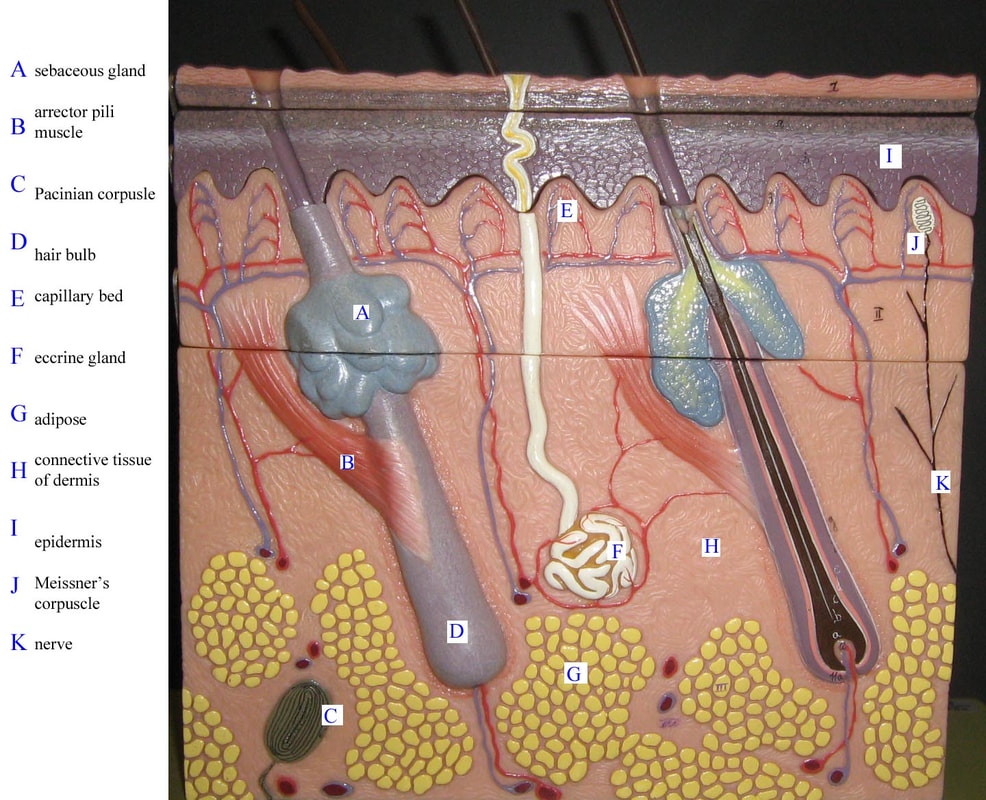The Cell

Hi! I'm MICHELLE THE CELL! Today I am going to teach you about .... CELLS!
YAY!
YAY!
The Anatomy of the Cell
|
|
|
The Cell is the Fundamental Unit of Life
- All living things are composed of one or more cells!
There are 2 major categories of cells.
1) Prokaryotic cells 2) Eukaryotic cells
Compartmentalization only exists in eukaryotic cells Eukaryotic cells are compartmentalized. They have a nucleus which is separated from the cytoplasm by a nuclear membrane or nuclear envelope. Eukaryotic cells also contain many membrane-bound organelles. In contrast, prokaryotic cells do not have a nucleus, nor do they have membrane-bound organelles.
The biggest differences between prokaryotic cells and eukaryotic cells are as follows:
- Eukaryotic cells have a nucleus and membrane-bound organelles.
- Prokaryotic cells do not have a nucleus.
- Prokaryotic cells do not have membrane-bound organelles.
- Prokaryotic cells have been on Earth billions of years longer than eukaryotic cells or eukaryotic organisms.
- Prokaryotic cells are smaller than eukaryotic cells.
- Prokaryotic cells are structurally less complex than eukaryotic cells.
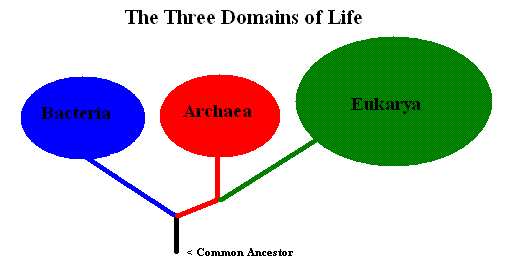
All prokaryotic organisms are composed of only one prokaryotic cell. All organisms in the archaea and the bacteria domains are prokaryotic organisms.
Eukaryotic organisms can be either unicellular or multicellular and are composed of eukaryotic cells. Eukaryotic organisms belong to the eukarya domain.
Eukaryotic organisms can be either unicellular or multicellular and are composed of eukaryotic cells. Eukaryotic organisms belong to the eukarya domain.
There are 2 major categories of eukaryotic cells:
1) Plant Cells 2) Animal Cells
1) Plant Cells 2) Animal Cells
Animal Cell
Structures and Organelles
THE CYTOPLASM
The internal environment of the cell is referred to as the CYTOPLASM. The cytoplasm includes the intracellular fluid, dissolved substances and organelles of the cell, but does not include the nucleus or the contents of the nucleus. In other words, the cytoplasm represents everything inside eukaryotic cells that are internal to the cell membrane (or plasma membrane) but external to the nucleus. In prokaryotic cells, the cytoplasm would refer to all of the intracellular contents.
The internal environment of the cell is referred to as the CYTOPLASM. The cytoplasm includes the intracellular fluid, dissolved substances and organelles of the cell, but does not include the nucleus or the contents of the nucleus. In other words, the cytoplasm represents everything inside eukaryotic cells that are internal to the cell membrane (or plasma membrane) but external to the nucleus. In prokaryotic cells, the cytoplasm would refer to all of the intracellular contents.
The Cytosol
The inside of the cell is an aqueous environment full of intracellular fluid, that is more appropriately referred as the CYTOSOL. If you were to remove the cellular structures from
the cytoplasm, you would be left with the cytosol. However, the cytosol is not just simply water, or H2O. The cytosol also contains, salts, ions, and organic compounds.
The inside of the cell is an aqueous environment full of intracellular fluid, that is more appropriately referred as the CYTOSOL. If you were to remove the cellular structures from
the cytoplasm, you would be left with the cytosol. However, the cytosol is not just simply water, or H2O. The cytosol also contains, salts, ions, and organic compounds.
The Cell Membrane / Plasma Membrane
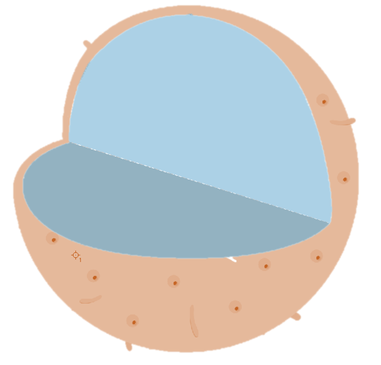
The cell membrane is also called the plasma membrane. The cell membrane protects the cell by creating a barrier between what is inside the cell and what is outside the cell. The cell membrane also regulates what comes into and what goes out of the cell. For this reason, we consider the cell membrane to be “SELECTIVELY PERMEABLE” which means that it allows some substances to enter or exit the cell, but not others.
This is a very important function!
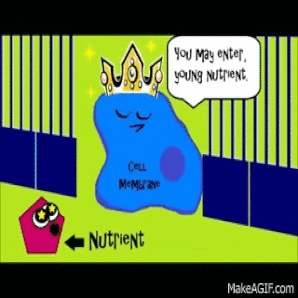
For this reason, we consider the cell membrane to be “SELECTIVELY PERMEABLE” which means that it allows some substances to enter or exit the cell, but not others. This is a very important function. The Cell Membrane is selectively permeable due to its structure. The cell membrane is made up of a phospholipid bilayer in all eukaryotic cells and bacteria cells.

Phospholipid
The phospholipid bilayer of the cell membrane has a unique structure. It is made up of an inner layer and an outer layer of phospholipids that are oriented with their 'tails' facing each other.
Phospholipids are considered amphiphilic, because they contain a polar, hydrophillic head that consists of a phosphate group and two nonpolar, hydrophobic fatty acid chains as 'tails'.
When the phospholipids form the cell membrane, the polar, hydrophillic (water-loving) heads are oriented towards the liquid outside the cells (extracellular fluid) and the liquid inside the cell (extracellular fluid). The tails of the phospholipids are oriented towards each other, away from the liquid, since they are made up of hydrophobic (water-fearing) fatty acid chains. This formation creates a barrier between the extracellular matrix and the intracellular fluid (cytology).
The phospholipid bilayer of the cell membrane has a unique structure. It is made up of an inner layer and an outer layer of phospholipids that are oriented with their 'tails' facing each other.
Phospholipids are considered amphiphilic, because they contain a polar, hydrophillic head that consists of a phosphate group and two nonpolar, hydrophobic fatty acid chains as 'tails'.
When the phospholipids form the cell membrane, the polar, hydrophillic (water-loving) heads are oriented towards the liquid outside the cells (extracellular fluid) and the liquid inside the cell (extracellular fluid). The tails of the phospholipids are oriented towards each other, away from the liquid, since they are made up of hydrophobic (water-fearing) fatty acid chains. This formation creates a barrier between the extracellular matrix and the intracellular fluid (cytology).
The Cell Wall
Plant cells, which are eukaryotic cells, have cell walls. Many prokaryotic organisms that live in aqueous environments also have the added protection of the cell wall. The cell wall lies on the outside of the cell membrane and gives additional protection to the cell. The cell wall protects against osmotic pressure. When a cell with a cell wall is placed in a hypotonic solution, the water molecules rush into the cell. The cell wall resists the added pressure and protects the cell from lysis (bursting open). Cells that are placed in a hypotonic solution that do not have a cell wall, will undergo lysis.
Plant cells, which are eukaryotic cells, have cell walls. Many prokaryotic organisms that live in aqueous environments also have the added protection of the cell wall. The cell wall lies on the outside of the cell membrane and gives additional protection to the cell. The cell wall protects against osmotic pressure. When a cell with a cell wall is placed in a hypotonic solution, the water molecules rush into the cell. The cell wall resists the added pressure and protects the cell from lysis (bursting open). Cells that are placed in a hypotonic solution that do not have a cell wall, will undergo lysis.
The Nucleus
The main function of the nucleus is to house the DNA in eukaryotic cells. DNA stands for deoxyribonucleic acid. It is the "instruction manual" for the cell. The primary function of the DNA is to provide the instructions for protein synthesis to the cell through the processes of transcription and translation.
Ribosomes
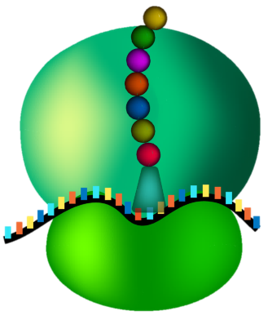
The Main Function of a Ribosome is to Be the Site of Protein Synthesis. Proteins perform the majority of the functions of the cell. They provide structure, they catalyze chemical reactions, they form the receptors and channels of the cell and much more. For this reason, cells are in the constant process of making proteins (protein synthesis). We should consider proteins as the "workhorses" of the cell.
Ribosomes are specialized organelles that exist in both eukaryotic and prokaryotic cells that function as the "site of protein synthesis".
The Rough Endoplasmic Reticulum
(The Rough ER)
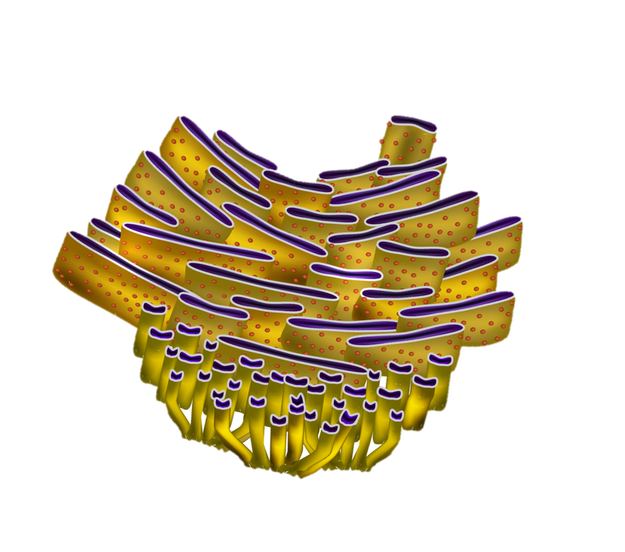
The main function of the rough ER is to house the ribosomes The rough ER is composed of a network of membranous sacs or envelopes and tubules. The outside of the rough ER appears 'rough' due to attached ribosomes. The rough ER gets its name from its 'bumpy' or 'rough' appearance due to ribosomes that are attached to it. In the rough ER, ribosomes are assembled in the nucleolus and then exit the nucleus. Some of these ribosomes then attach themselves to the rough endoplasmic reticulum, where they will act as a "site of protein synthesis" for the cell.
There are 2 types of endoplasmic reticulum (ER); the rough endoplasmic reticulum and the smooth endoplasmic reticulum.
The Smooth Endoplasmic Reticulum
(The Smooth ER)
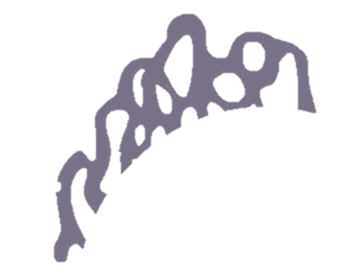
The Main Function of the Smooth ER is to Make Lipids The smooth endoplasmic reticulum (Smooth ER) appears smooth in comparison to the rough ER. This is because the smooth ER does not have ribosomes bound to it. The structure of the smooth ER is similar to that of the rough ER in the fact that it is composed of a membranous system of sacs or envelopes and tubules. Its structure differs in the fact that it appear smooth since it does not have ribosomes attached to it.
The smooth ER's main function is to make lipids. The smooth ER also functions to synthesize steroid hormones, metabolize lipids and even acts assists in detoxification of the cell.
The Lysosome
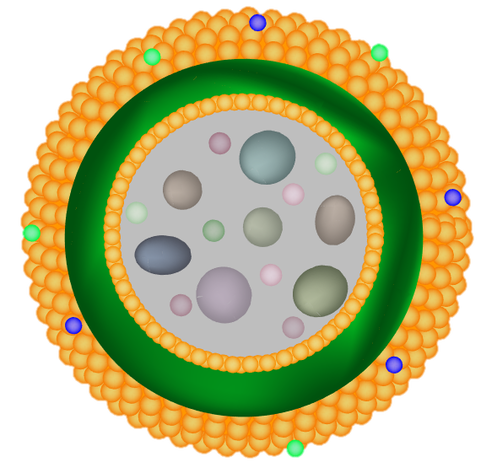
The Main Function of the Lysosome is to Digest Biological Matter
A lysosome is a membrane-bound cytoplasmic organelle that exists only in eukaryotic cells. Lysosomes contain enzymes that can break down different biomolecules. The lysosome works to digest substances in a similar way that our own stomach does. Lysosomes function in single-celled eukaryotic organisms, such as protozoa, to digest food.
A lysosome is a membrane-bound cytoplasmic organelle that exists only in eukaryotic cells. Lysosomes contain enzymes that can break down different biomolecules. The lysosome works to digest substances in a similar way that our own stomach does. Lysosomes function in single-celled eukaryotic organisms, such as protozoa, to digest food.
The Golgi Body / Golgi Apparatus

The Main Function of the Golgi Body is to Package and Ship Proteins
The Golgi body functions to Modify, Package and Ship proteins in eukaryotic cells! The Golgi body is able to sort the incoming proteins and can tell where their final destination should be. These proteins could be destined for a number of destination including secretion from the cell, inclusion in lysosomes, or incorporation into the plasma membrane.
The Golgi Apparatus is made up of 3 – 10 “envelopes” called cisternae.
You can think of the Golgi body as the Post Office of the cell. After proteins are made at the ribosome, the proteins travel to the Golgi body. The Golgi body will modify the proteins with strings of amino acid sequences (called signaling sequences) that will tell the cell where the protein is going to go! You can think of this process as "gift wrapping" and "placing a shipping label" on the protein!
The Golgi body functions to Modify, Package and Ship proteins in eukaryotic cells! The Golgi body is able to sort the incoming proteins and can tell where their final destination should be. These proteins could be destined for a number of destination including secretion from the cell, inclusion in lysosomes, or incorporation into the plasma membrane.
The Golgi Apparatus is made up of 3 – 10 “envelopes” called cisternae.
You can think of the Golgi body as the Post Office of the cell. After proteins are made at the ribosome, the proteins travel to the Golgi body. The Golgi body will modify the proteins with strings of amino acid sequences (called signaling sequences) that will tell the cell where the protein is going to go! You can think of this process as "gift wrapping" and "placing a shipping label" on the protein!
Chloroplasts
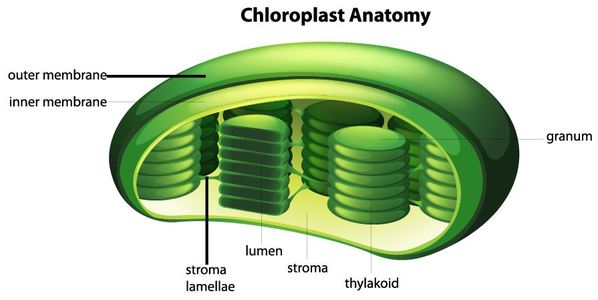
While all living organisms must undergo cellular respiration, not all organisms are able to photosynthesize. There are photosynthetic organisms that belong to all 3 domains of life (archaea, bacteria and eukarya).
Some of the eukaryotic organisms that use photosynthesis include plants and algae (a type of protist). In eukaryotic organisms, the process of photosynthesis takes place in the specialized membrane-bound organelles called chloroplasts. The chloroplasts contain a photosensitive pigment that captures light energy and starts the process of photosynthesis.
Some prokaryotic organisms also undergo photosynthesis. However, they do this without the assistance of structures like chloroplasts. Instead, the processes needed to capture light energy and transform it take place in the cytoplasm and in the membrane of the bacteria.
An example of a photosynthetic bacterium is the cyanobacterium, shown here.
Some of the eukaryotic organisms that use photosynthesis include plants and algae (a type of protist). In eukaryotic organisms, the process of photosynthesis takes place in the specialized membrane-bound organelles called chloroplasts. The chloroplasts contain a photosensitive pigment that captures light energy and starts the process of photosynthesis.
Some prokaryotic organisms also undergo photosynthesis. However, they do this without the assistance of structures like chloroplasts. Instead, the processes needed to capture light energy and transform it take place in the cytoplasm and in the membrane of the bacteria.
An example of a photosynthetic bacterium is the cyanobacterium, shown here.
Cytoskeleton- Centrosomes, Centrioles, and Microtubules
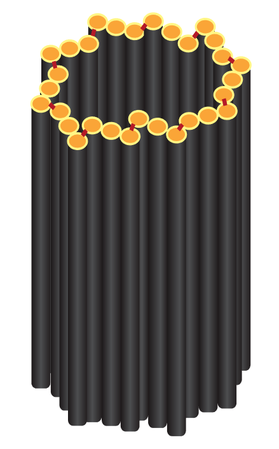
We have not yet discovered any prokaryotic cells having a cytoskeleton. Prokaryotic cells do produce some proteins that give them their shape, but those proteins do not have the level of order and organization that we observe in cytoskeleton of the eukaryotic cells.
The eukaryotic cytoskeleton is a web-like scaffolding of protein fibers that act as transportation superhighways and give the cell its structure and shape. They line up chromosomes and help the daughter cells separate during cell division.
The centrosome acts as the microtubule organization center. The microtubules are bundled and assembled with microfilaments into various organized subunits.
The cytoskeleton of the cell provides structure to the cell, in a similar way that our own skeleton gives us shape! In addition to structure, the cytoskeleton acts as a scaffolding within the cell that can be used to anchor certain organelles in place or as a roadway for molecules to travel on. Another main function of the centrosome and microtubules is seen during the cell cycle and mitosis (cell division).
The eukaryotic cytoskeleton is a web-like scaffolding of protein fibers that act as transportation superhighways and give the cell its structure and shape. They line up chromosomes and help the daughter cells separate during cell division.
The centrosome acts as the microtubule organization center. The microtubules are bundled and assembled with microfilaments into various organized subunits.
The cytoskeleton of the cell provides structure to the cell, in a similar way that our own skeleton gives us shape! In addition to structure, the cytoskeleton acts as a scaffolding within the cell that can be used to anchor certain organelles in place or as a roadway for molecules to travel on. Another main function of the centrosome and microtubules is seen during the cell cycle and mitosis (cell division).
Cool Cells IN ACTION! |
|
MUSCLE CELLS
NEURONS
realcleverscience.tumblr.com
Neurons making connections in the hippocampus where memories are formed.
realcleverscience.tumblr.com
Neurons making connections in the hippocampus where memories are formed.
Summary of Structure and Function of Eukaryotic Organelles
Anatomy of the Cell
The Cell Membrane (Plasma Membrane)
- The Main Function of the Cell Membrane is PROTECTION -
The cell membrane is also called the plasma membrane. You can think of the membrane as the "skin" of the cell. Anything outside of the cell is considered "extracellular" and the contents inside the cell are considered "intracellular". The cell membrane protects the cell by creating a barrier between what is inside the cell and what is outside the cell.
In addition to this, the cell membrane does something our skin can’t do... It regulates what comes into the cell and what goes out of the cell. For this reason, we consider the cell membrane to be “SELECTIVELY PERMEABLE” which means that it allows some substances to enter or exit the cell, but not others. This is a very important function.
The Cell Membrane is selectively permeable due to its structure. The cell membrane is made up of a phospholipid bilayer.
The Cell Membrane is selectively permeable due to its structure. The cell membrane is made up of a phospholipid bilayer.
Phospholipid
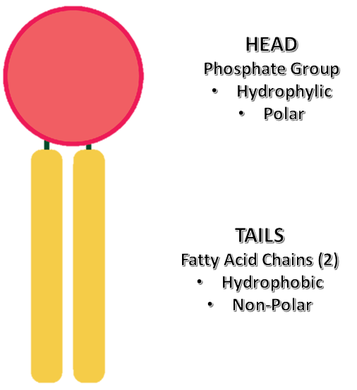
The phospholipid bilayer of the cell membrane has a unique structure. It is made up of an inner layer and an outer layer of phospholipids that are oriented with their 'tails' facing each other.
Phospholipids are considered amphiphilic, because they contain a polar, hydrophillic head that consists of a phosphate group and two nonpolar, hydrophobic fatty acid chains as 'tails'.
When the phospholipids form the cell membrane, the polar, hydrophillic (water-loving) heads are oriented towards the liquid outside the cells (extracellular fluid) and the liquid inside the cell (extracellular fluid). The tails of the phospholipids are oriented towards each other, away from the liquid, since they are made up of hydrophobic (water-fearing) fatty acid chains. This formation creates a barrier between the extracellular matrix and the intracellular fluid (cytology).
Phospholipids are considered amphiphilic, because they contain a polar, hydrophillic head that consists of a phosphate group and two nonpolar, hydrophobic fatty acid chains as 'tails'.
When the phospholipids form the cell membrane, the polar, hydrophillic (water-loving) heads are oriented towards the liquid outside the cells (extracellular fluid) and the liquid inside the cell (extracellular fluid). The tails of the phospholipids are oriented towards each other, away from the liquid, since they are made up of hydrophobic (water-fearing) fatty acid chains. This formation creates a barrier between the extracellular matrix and the intracellular fluid (cytology).
Click Below to View a Video on the Mighty Membrane
Nucleus
The Main Function of the Nucleus is to Hold the DNA.
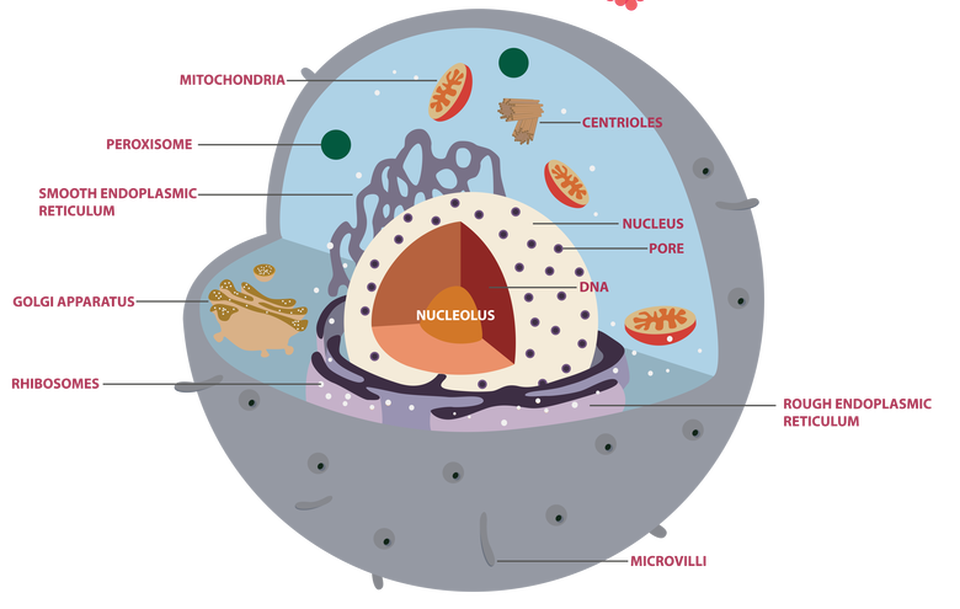
The structure of the nucleus - The nucleus is surrounded by the nuclear envelope, which is essentially a membrane (a phospholipid bilayer) that compartmentalizes (or separates) the nucleus from the rest of the cell. The liquid inside of the nucleus is called the nucleoplasm. The nucleus houses the DNA, which holds the instructions for protein synthesis (as well as other instructions for the cell).
DNA stands for deoxyribonucleic acid. It is the "instruction manual" for the cell. The primary function of the DNA is to provide the instructions for protein synthesis to the cell through the processes of transcription and translation.
Ribosomes
The Main Function of a Ribosome is to Be the Site of Protein Synthesis.
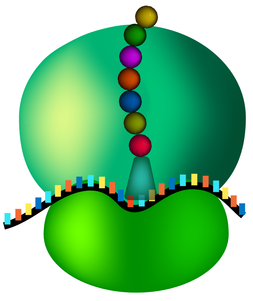
After the ribosome is assembled (made) in the nucleolus, it leaves the nucleus. Some ribosomes will end up as "free ribosomes" that remain unattached in the cytosol. Other ribosomes will attach to the nearby Rough Endoplasmic Reticulum.
All ribosomes function as "the site of protein synthesis". Free ribosomes are used as the site for making water-soluble proteins, whereas the ribosomes that are attached to the rough endoplasmic reticulum act as the site for making proteins that will either be incorporated into the cell membrane or will be transported out of the cell (via exocytosis).
All ribosomes function as "the site of protein synthesis". Free ribosomes are used as the site for making water-soluble proteins, whereas the ribosomes that are attached to the rough endoplasmic reticulum act as the site for making proteins that will either be incorporated into the cell membrane or will be transported out of the cell (via exocytosis).
ENDOPLASMIC RETICULUM
There are 2 types of endoplasmic reticulum (ER); the rough endoplasmic reticulum and the smooth endoplasmic reticulum.
|
The Rough Endoplasmic Reticulum
(The Rough ER) The rough ER gets its name from its 'bumpy' or 'rough' appearance due to ribosomes that are attached to it. In the rough ER, ribosomes are assembled in the nucleolus and then exit the nucleus. Some of these ribosomes then attach themselves to the rough endoplasmic reticulum, where they will act as a "site of protein synthesis" for the cell.
|
The Smooth Endoplasmic Reticulum
(The Smooth ER) The smooth endoplasmic reticulum (Smooth ER) appears smooth in comparison to the rough ER. This is because the smooth ER does not have ribosomes bound to it. The smooth ER's main function is to make lipids.
|
Summary of Structure and Function of Organelles
Eukaryotic ORGANELLE or STRUCTURE |
FUNCTION |
|
MEMBRANE |
REGULATION OF TRANSPORT INTO AND OUT OF CELL |
CELL SKIN / DOORMAN/ BOUNCER |
CYTOSOL (intracellular fluid) |
LIQUID OF THE CELL THAT LIES INSIDE OF THE CELL MEMBRANE, AND OUTSIDE THE NUCLEUS |
FLUID |
VESICLES |
TRANSPORTATION |
VEHICLES |
NUCLEAR ENVELOPE / NUCLEAR MEMBRANE |
MEMBRANE AROUND THE NUCLEUS, REGULATION OF TRANSPORT INTO AND OUT OF NUCLEUS |
NUCLEUS SKIN / DOORMAN/ BOUNCER |
SMOOTH ENDOPLASMIC RETICULUM |
LIPID ASSEMBLY |
LIPID ASSEMBLY LINE |
RIBOSOMES |
THE SITE OF PROTEIN SYNTHESIS |
PROTEIN ASSEMBLY LINE |
LYSOSOME |
DIGESTS UNWANTED SUBSTANCES |
CELL STOMACH / RECYCLING CENTER |
ROUGH ENDOPLASMIC RETICULUM |
HOLDS RIBOSOMES |
FACTORY |
MITOCHONDRIA |
CREATES ENERGY (ATP) |
POWER PLANT |
GOLGI BODY / GOLGI APPARATUS |
MODIFIES, PACKAGES AND SHIPS PROTEINS |
POST OFFICE |
NUCLEUS |
HOLDS THE DNA |
INSTRUCTION MANUAL |
Cytoplasm |
Fluid, dissolved substances and organelles outside the nucleus, but inside the cell. |
Everything NOT in the nucleus. |
Microtubules / Microfilaments / Centrioles / Centrosomes |
Structural Support and Locomotion |
Skeleton of the Cell |
Vacuole |
Storage of Food and Water |
Kitchen Cupboard |
Cell Wall (plants only) |
Protection / Maintain Shape |
Armor |
Chloroplasts (plants only) |
Makes Food (glucose) for the Plant Cell Using Sunlight |
CHEF |

